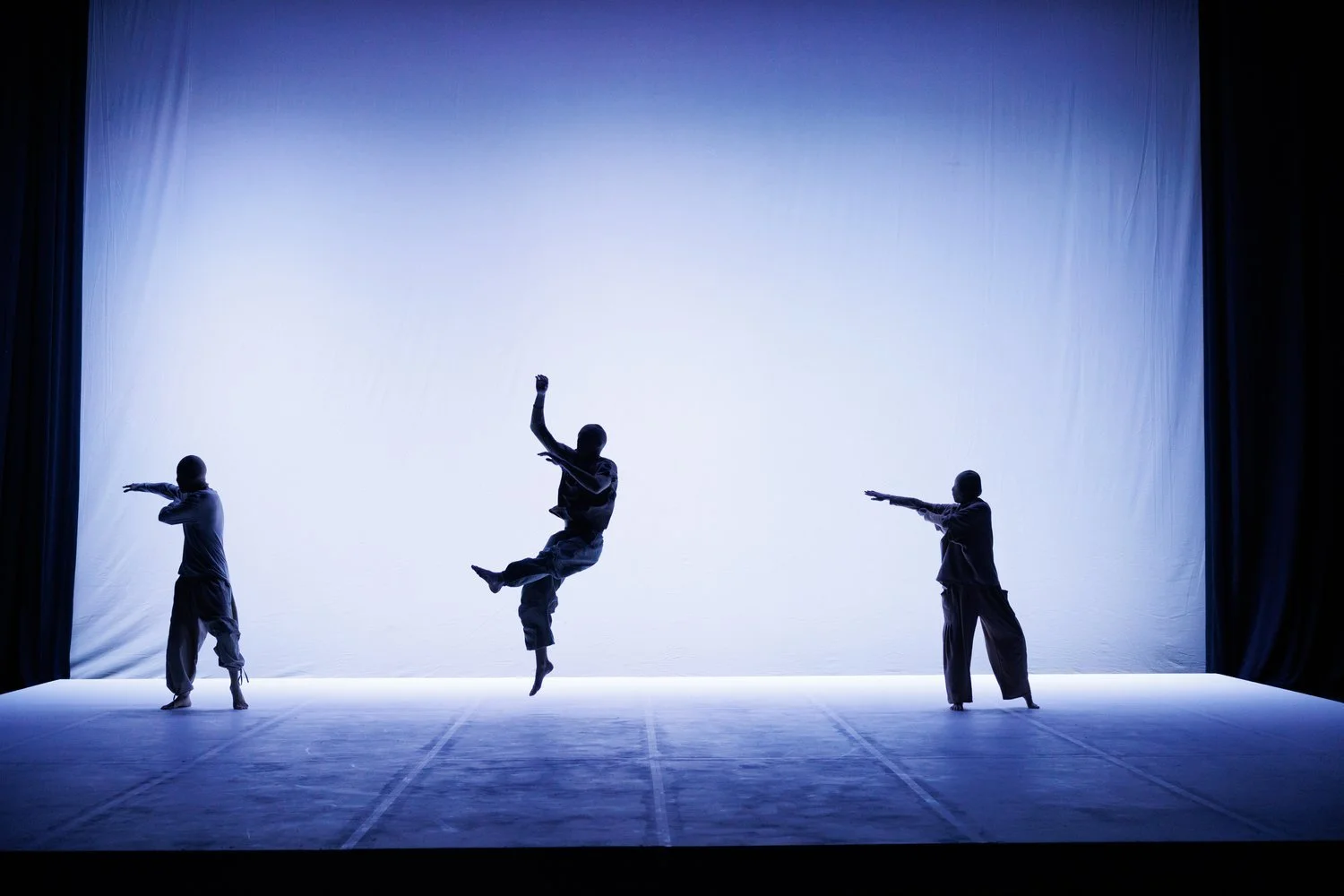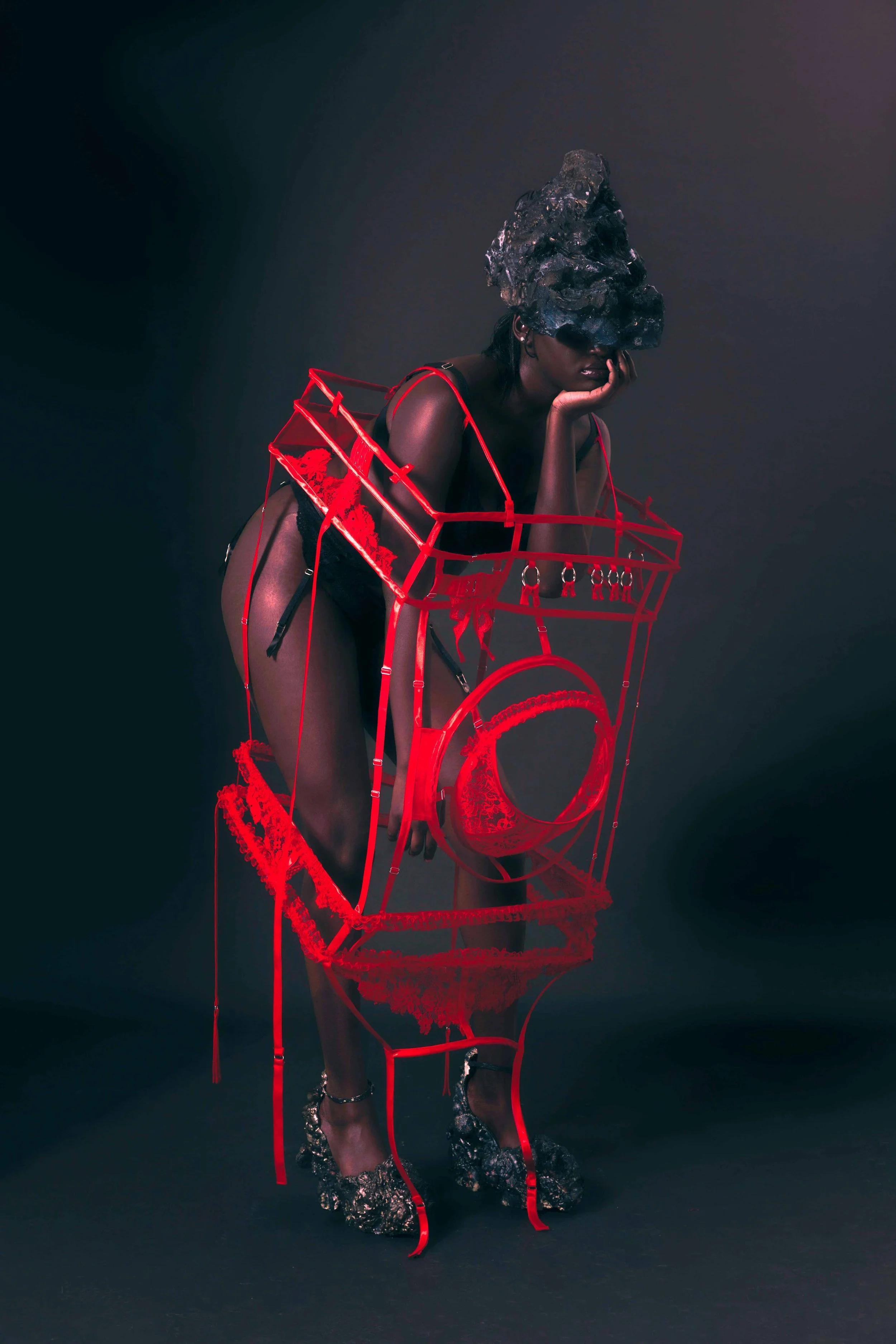Tong Tong is a cutting-edge fashion designer and creative based in New York City. Tong's designs draw inspiration from a rich tapestry of influences, including personal memories, a profound passion for fashion history, and an adventurous exploration of materials. His collection Home Alone draws inspiration from a cherished childhood memory, the clandestine explorations into his parents' wardrobe.
INTERVIEW | Haochen Ren
Haochen Ren is an independent London-based artist. Over the most recent two years of his practices, the exhibition as a medium has been seen as his primary research direction. Exploring the possibility of constructing cognitive experiences through the concept of "exhibition" not only supports his practice at this stage but also serves as a fundamental step in exploring "how art and exhibition can provide a decentred platform”.
INTERVIEW | Shiyao Xia
Shiyao Xia is a mixed media artist based in London, UK. She explores the concept of what is remembered as ephemeral and influenced by experiences felt at the time of observation. Her work is inspired by the small, unassuming things in the corner of our eyes that hold a multitude of hidden narratives. Looking for the relationship between memories and multiple meanings.
INTERVIEW | Moyu Yang
Within the vibrant artistic landscape of London, Moyu Yang garners recognition as an artist of notable acclaim. Her creative pursuits span across sculpture, set design, body performance, experimental film and fashion, while showcasing a diverse artistic practice. In the "Presence" series, she highlights the neglected factors of language and inspires feminists to reflect on themselves.
INTERVIEW | Mengjie Mo
Mengjie Mo, originally from Yunnan, China, now resides and works in Detroit, U.S. Her life experiences coupled with extensive study and travel, have instilled in her a critical perspective on societal issues. Mo uses her art as a means to challenge patriarchal norms and blur the boundaries that separate individuals, advocating for a more interconnected and inclusive world.
INTERVIEW | Aodan
Aodan is a visual artist who is more willing to call herself an 'escapist' and 'art shaman'. Her body of work delves into the complicated tableaux with aggressiveness, gentleness, fragility, softness, toughness, struggles, emotions, and pain within femininity and female gender in delicate and cryptic looks. She digs into the neglected, unorthodox, forgotten, and hidden parts of "Yin" utilizing forgotten ancient traditional craft techniques.
INTERVIEW | Han Yang
Han Yang is a distinguished visual artist and photographer. Her work masterfully combines abstract and surreal elements to evoke profound emotions and explore the complexities of human psychology. Central to Han's artistic vision are themes of femininity, the human body, gender, and technology, which she vividly represents through oriental metaphors.
INTERVIEW | Qibai Ting
Qibai Ting is an artist currently based in Beijing and London. Her practice mainly focuses on narrative objects and sculptural installations. Qibai is interested in stargazing activities, and she considers her works as “constellations”. Living very close to forests and mountains, she identifies with the philosophy of nature and practices within landscape.
INTERVIEW | Fang Yutao
Fang Yutao is a Los Angeles-based multidisciplinary artist from China with a strong background in architecture. She reshapes traditional narratives by incorporating complex historical symbols that transcend cultural boundaries, drawing on premodern mythology that embraces pantheism and animism to redefine anthropocentric metaphors and dismantle traditional masculine narratives.
INTERVIEW | Jasmine Zhu
Jasmine Zhu is a Chinese artist currently based in the US. Her works range from sketches and drawings to large-scale ink paintings, as well as architectural drawings. Her series Multi-Lanscapes takes inspiration from the mandatory mathematics course multivariable calculus and is comprised of ink drawings on rice paper, with blueprint free hand lines as the background, as well as digital and spatial reimaginations.
INTERVIEW | Chen Luyao
Chen Luyao is a Chinese artist currently based in the US, working with jewelry and wearable art. In her latest series of works, Super Glue?, she uses superglue as her primary medium to create jewels and other wearable peaces. Superglue is a commonly used tool to connect objects. It is convenient, versatile, accessible, and easy to apply. In the series it occupies the center stage.
INTERVIEW | Gao Xue'er
Xue'er Gao’s work is grounded in her background in studio art, particularly in book, printmaking, and papermaking, where she learned and practiced various techniques, later combining them in multiple editions. She has also honed her photography skills, film and digital, and combined them with her practice. She has spent significant time studying traditional Chinese crafts and culture, observing nature, and paying attention to her surroundings.
INTERVIEW | Jingyi Chen
Jingyi Chen, born in 1997 in China, is an innovative digital artist and designer whose work critically engages with contemporary digital themes. Jingyi's portfolio is a testament to her ability to blend traditional artistry with modern technological insights. Her art, inspired by postmodernism and new media theories, navigates the complexities of cyborg identities, surveillance capitalism, algorithmic bias, and feminism.
INTERVIEW | Jiayun Chen
Jiayun Chen is an interdisciplinary artist who manifests ideas through forms of installation, ceramics, painting, and drawing. In searching for poetics and humor within failed translations, Chen investigates the aesthetics of failure in the experience of cross-cultural encounters. Having divided time nearly equally between China and America, Chen's artistic journey is heavily influenced by straddling the cultural divide between the two.
INTERVIEW | Rosie Zirou Zhang
Rosie Zirou Zhang is a fashion and textile designer based in New York City, with a strong focus on womenswear and weaving. Central to her creative process is the harmonious interplay of textures and colors, a signature element evident throughout her work. Her unique approach involves crafting her own fabrics and exploring the communication between fashion and fine art.
INTERVIEW | Kangqi Zou
Kangqi Zou is a New York-based fashion designer and an esteemed alumna of Parsons School of Design. Her work is recognized for its unique fusion of cultural heritage and contemporary aesthetics, focusing on themes of identity, femininity, and societal roles. Her designs engage in a thoughtful dialogue between form and concept, exploring the nuances of identity and societal roles.
INTERVIEW | Beverley Jane Stewart
Beverley Jane Stewart is a visual artist currently based in the UK. As a visual writer, she looks in intricate detail at how Jewish heritage operates in contemporary multicultural society fusing facts with emotions. She tells stories from past to present, displaying history in its various periods. Her work is now fast gaining international standing, with exhibitions in the United Kingdom, Israel, and Italy.
INTERVIEW | Jingsi Chen
Jingsi Chen (shertato) is a multidisciplinary artist and designer born in Beijing, China in 1997. She delves into how narratives may have multiple readings and perspectives. She develops work employing metaphor to address current societal issues through research informed by mythological narrative texts that can be re-interpret and applied to new meanings.
INTERVIEW | Mo Nan
Mo Nan, a native of China and a 2022 graduate of the prestigious Royal College of Art, is a London-based freelance digital artist. His unique artistic style, which seamlessly blends digital art and fashion design, sets him apart. He specializes in creating personal works and visual and film concept creations for brands, exploring the endless possibilities within these two realms.
INTERVIEW | Angel Jiaqi Qin
Angel Jiaqi Qin is a post-human image weaver. Having lived and studied in Rochester, New York, Beijing, and London, Angel's practice seeks out an exploration of disruptions in the otherwise straight, smooth, and flat narratives. She weaves patterns of imagery from a non-human-centric perspective, questioning the ontological nature of humanity and its relationship with ecology.





























